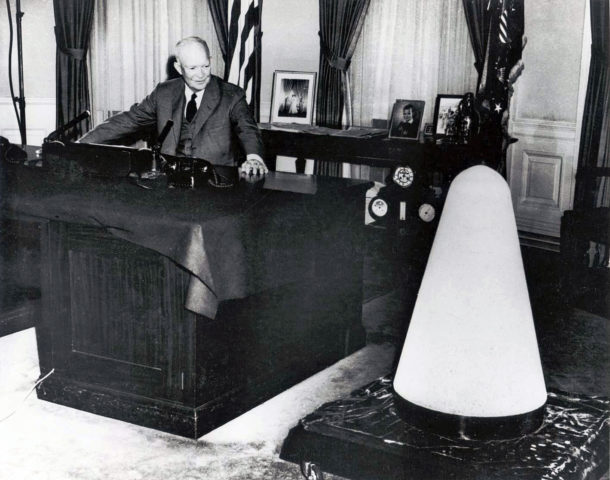
Sixty years ago this month, the first ablative nose cone to survive entry into the Earth’s atmosphere was formally presented to the American public. President Dwight D. Eisenhower displayed the recovered nose cone during a national television broadcast from the Oval Office.
An object making a hypersonic entry into the the Earth’s atmosphere from space possesses a great deal of kinetic energy. This energy of motion is transformed to thermal energy as aerodynamic drag slows the vehicle during atmospheric flight. A portion of the entry thermal energy is absorbed by the vehicle structure in a process referred to as aerodynamic heating. This heat transfer process causes the temperature of the external surface of the vehicle to significantly increase.
From a vehicle survivability standpoint, three parameters are key; (1) maximum heat transfer rate, (2) maximum surface temperature and (3) total thermal energy absorbed by the vehicle during entry. The concern is that there is enough kinetic energy in the entry flight domain to vaporize any known material if that energy is completely absorbed by the vehicle.
One has only to look into the heavens at night to become convinced of the ferocity of the entry environment. The streaks of white, yellow, green, blue, or red light that dramatically flash into and out of existence are associated with the vaporization of meteors transiting the atmosphere. Few meteors have enough pre-entry mass to allow a minor portion thereof to reach the ground. Those that do are referred to as meteorites.
The problem of surviving atmospheric entry was a major research topic in the 1950’s. Attention focused on protecting the nuclear warhead carried by the reentry vehicle of an Intercontinental Ballistic Missile (ICBM). A pair of research scientists at the NACA Ames Research Center in California, H. Julian Allen and Alfred J. Eggers, are credited with solving the problem. The key was to hemispherically-blunt or round the nose of a reentry vehicle.
A blunted forebody disposes a detached, hyperbolic-shaped shock wave which slows the post-shock flow to subsonic speeds in the stagnation region. A byproduct of this flow deceleration is a significant increase in post-shock static pressure and temperature. While this dramatically increases vehicle wave drag, most of the high temperature air passes around the vehicle and thus never physically comes in contact with it. The result is that only a small fraction of the overall thermal energy of the freestream flow is convected to the vehicle surface.
In contrast to the above, a sharp-nosed vehicle nose disposes an attached, highly-swept shock wave. This flow topology results in a large fraction of the overall thermal energy being convected to the vehicle surface. The is because the degree of post-shock flow slowing in such a situation is small. Indeed, the post-shock flow has a high supersonic Mach number. Now, due to the “no-slip” condition caused by fluid viscosity, the flow velocity at the vehicle surface is zero. Thus, the bulk of the flow deceleration has to occur within the boundary layer. The huge shearing stresses and temperature gradients that result generate extreme heat flux rates at the vehicle surface.
On Thursday, 08 August 1957, a Jupiter-C launch vehicle carrying a one-third scale version of a Jupiter IRBM nose was launched from LC-6 at Cape Canaveral, Florida. The nose cone traveled 1,168 nautical miles, reaching nearly 9,000 mph and an altitude of 260 nautical miles in the process. During reentry an ablative heat shield was used to protect the nose cone from the aerodynamic heating environment. The vehicle parachuted into the Atlantic Ocean and was recovered by Navy swimmers within three hours of launch.
On Thursday, 07 November 1957, President Dwight D. Eisenhower displayed the recovered Jupiter IRBM scaled nose cone in a nationally televised broadcast from the Oval Office. The excellent condition of the recovered vehicle was a stark testament to the effectiveness of a blunted, ablative nose cone to weather the rigors of reentry heating. This historic breakthrough would forever change the science of atmospheric entry. Indeed, it would ultimately make possible successful entry of Apollo astronauts returning from the Moon at 25,000 mph.
Today, one can view the recovered Jupiter IRBM subscale nose cone at the Smithsonian’s National Air and Space Museum in Washington, DC. Specifically, it is on public display in the Space Race Exhibition at the National Mall Building.
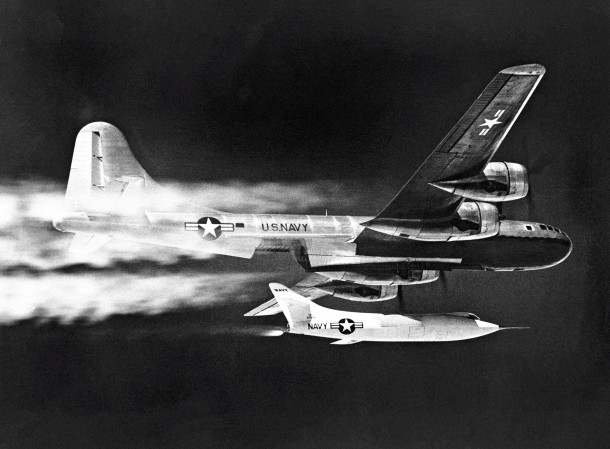
Sixty-four years ago today, the USN/Douglas D-558-II Skyrocket became the first aircraft to fly at twice the speed of sound. This historic event took place in the skies over Edwards Air Force Base, California.
The D-558-II was a United States Navy (USN) X-aircraft and first flew in February of 1948. It was contemporaneous with the USAF/Bell XS-1. The aircraft measured 42 feet in length with a wing span of 25 feet. Maximum take-off weight was 15,266 pounds. Douglas manufactured a trio of D-558-II aircraft (Bureau Numbers 37973, 37974 and 37975).
The original version of the swept-wing D-558-II had both rocket and turbojet propulsion. The latter system providing a ground take-off capability. However, like other early X-aircraft such as the XS-1, X-1A, X-2 and X-15), the D-558-II achieved max performance through the use of a mothership and rocket power alone.
The record-setting day was Friday, 20 November 1953. On that occasion, the white D-558-II (Bureau No. 37974) was carried to the drop altitude of 32,000 feet by a USN P2B-1S (Bureau No. 84029). NACA test pilot A. Scott Crossfield was in the D-558-II cockpit. Although ailing with the stomach flu, Crossfield was not about to let a little urpiness force him to miss today’s historic aeronautical events!
Following a successful drop from the mothership, Crossfield ignited the Reaction Motors LR8-RM-6 (USN designation for the XLR-11) rocket motor and started uphill. After closely adhering to a carefully planned climb schedule, Crossfield initiated a pushover at 72,000 feet that resulted in a shallow dive. Passing through 62,000 feet, the D-558-II hit a speed of 1,291 mph; Mach 2.005.
The D-558-II reached Mach 2 due to a confluence of several factors. First, Crossfield flew the profile as briefed. Second, temperatures at altitude that day were unusually low. This lowered the speed of sound and thus increased Mach number. Third, the ground crew did an extraordinary job of optimizing the D-558-II for the maximum speed mission.
Expanding on the last point mentioned above, extension tubes were added to the LR8-RM-6 rocket motor. This increased thrust from 6,000 to 9,000 pounds. The aircraft was then cold-soaked overnight in an effort to maximize its propellant load. Finally, external airframe gaps and panel openings were taped over and the aircraft was waxed and polished in an effort to minimize aerodynamic drag.
Scott Crossfield received the 1954 Lawrence B. Sperry Award for his Mach 2 exploits. The record-setting aircraft (Bureau No. 37934) is currently displayed at the National Air and Space Museum in Washington, D.C. in tribute to its many contributions to aviation history.
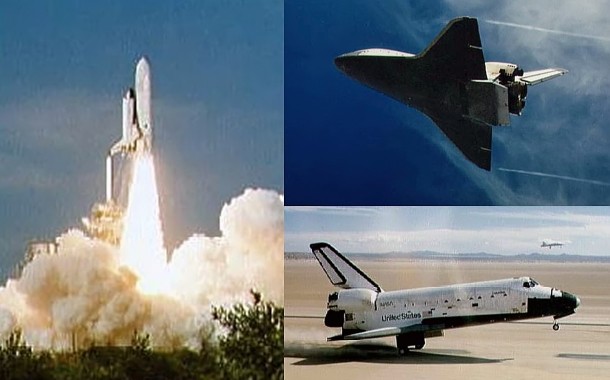
Thirty-six years ago this week, the Space Shuttle Columbia completed the second orbital space mission of the Space Shuttle Program. Designated STS-2, the mission marked the first reuse of a space vehicle for manned orbital flight.
America’s early manned spacecraft – Mercury, Gemini and Apollo – were single-flight vehicles. That is, a new spacecraft was required for each space mission. This was appropriate for meeting the aims of the early space program which concentrated on getting America to the moon before the end of the 1960’s.
The concept of space vehicle reusability came into vogue with the introduction of the Space Transportation System (STS). The original goal of the STS was to provide frequent and routine access to space via a fleet of Space Shuttle vehicles. For the STS to achieve economic viability, this meant flying a Space Shuttle once every two weeks. History records that this projected flight rate was much too optimistic.
The Space Shuttle vehicle was ultimately configured as a 3-element system consisting of (1) a winged orbiter, (2) a pair of solid rocket boosters (SRB’s) and (3) an external tank (ET). Both the orbiter and the SRB’s were designed to be reusable. The ET would be the only disposable element of the system since higher costs would be incurred in the recovery and refurbishment of this piece of flight hardware than in simply using a new one for each flight.
The Space Shuttle was designed to haul large payloads; on the order of 60,000 and 50,00 lbs into and out of orbit, respectively. With a maximum landing weight of 230,000 lbs, the Space Shuttle Orbiter needed wings to generate the required aerodynamic lift force. Wings were needed to satisfy the Orbiter’s 1,100-nm entry cross range requirement as well.
Following the successful first flight (STS-1) of the Space Shuttle Columbia in April of 1981, preparations began immediately to ready the Orbiter for its equally monumental second flight. The STS-2 flight crew would consist of Commander Joe Henry Engle and Pilot Richard Harrison Truly. STS-2 would be the first orbital spaceflight for both men.
On Thursday, 12 November 1981, the Space Shuttle Columbia lifted-off at 15:09:59 UTC from Cape Canaveral’s LC-39A. Ascent flight was nominal and Columbia was placed into a 125-nm x 120-nm orbit. At this point, Columbia became the first manned spacecraft to achieve Earth-orbit twice. It was an extra special occasion for Richard Truly inasmuch as it was his 44th birthday.
Engle and Truly anticipated 5-days in orbit with their celestial steed. However, one of Columbia’s three fuel cells failed early-on and the mission was reduced to just over two days. Nonetheless, the crew achieved 90 percent of the mission’s goals. They even remained awake during a scheduled sleep period to exercise the new Canadian Remote Manipulator System (RMS).
On Saturday, 14 November 1981, Columbia and her crew successfully completed STS-2 by landing on Rogers Dry Lake at Edwards Air Force Base, California. Main gear touchdown occurred at 21:23:11 UTC. Joe Engle flew the entire reentry manually. He holds the distinction of being the only pilot to manually fly a lifting space vehicle all the way from orbit to landing. Engle completed a total of 29 Programmed Test Input (PTI) aerodynamic maneuvers in the process.
STS-2 was a monumental success. Columbia became the first space vehicle to be reused for manned orbital space operations. Other Orbiters would follow including Challenger, Atlantis, Discovery, and Endeavor. The final mission of the Space Shuttle Program (STS-135) was flown by Atlantis in July 2011.
As a footnote, Joe Engle went on to command one more Space Shuttle mission in 1985 (STS-51I). He retired from the USAF in November of 1986. Richard Truly served as Commander of STS-8 in 1983. That mission featured the first night launch and landing of the Space Shuttle. Richard Truly also served as NASA Administrator from May of 1989 to May of 1992.
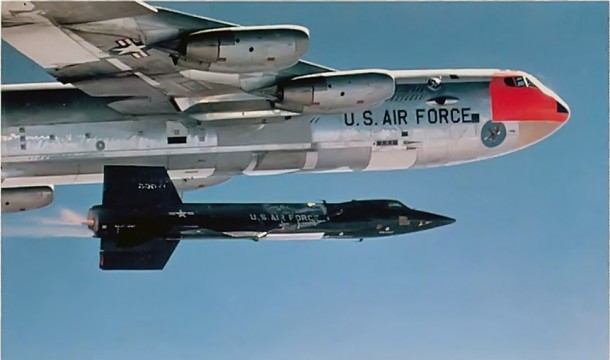
Fifty-six years ago today, the USAF/NASA/North American X-15 became the first manned aircraft to exceed Mach 6. United States Air Force test pilot Major Robert M. White was at the controls of the legendary hypersonic flight research aircraft.
The North American X-15 was the first manned hypersonic aircraft. It was designed, engineered, constructed and first flown in the 1950’s. As originally conceived, the X-15 was designed to reach 4,000 mph (Mach 6) and 250,000 feet. Before its flight test career was over, the type would meet and exceed both performance goals.
North American built a trio of X-15 airframes; Ship No. 1 (S/N 56-6670), Ship No. 2 (56-6671) and Ship No. 3 (56-6672). The X-15 measured 50 feet in length, had a wing span of 22 feet and a GTOW of 33,000 lbs. Ship No. 2 would later be modified to the X-15A-2 enhanced performance configuration. The X-15A-2 had a length of 52.5 feet and a GTOW of around 56,000 lbs.
The Reaction Motors XLR-99 rocket engine powered the X-15. The small, but mighty XLR-99 generated 57,000 pounds of sea level thrust at full-throttle. It weighed only 910 pounds. The XLR-99 used anhydrous ammonia and LOX as propellants. Burn time varied between 83 seconds for the stock X-15 and about 150 seconds for the X-15A-2.
The X-15 was carried to drop conditions (typically Mach 0.8 at 42,000 feet) by a B-52 mothership. A pair of aircraft were used for this purpose; a B-52A (S/N 52-003) and a B-52B (S/N 52-008). Once dropped from the mothership, the X-15 pilot lit the XLR-99 to accelerate the aircraft. The X-15A-2 also carried a pair of drop tanks which provided propellants for a longer burn time than was possible with the stock X-15 flight.
The X-15 employed both aerodynamic and reaction flight controls. The latter were required to maintain vehicle attitude in space-equivalent flight. The X-15 pilot wore a full-pressure suit in consequence of the aircraft’s extreme altitude capability. The typical X-15 drop-to-landing flight duration was on the order of 10 minutes. All X-15 landings were performed deadstick.
On Thursday, 09 November 1961, USAF Major Robert M. White would fly his 11th X-15 mission. The X-15 and White had already become respectively the first aircraft and pilot to hit Mach 4 and Mach 5. On this particular day, White would be at the controls of X-15 Ship No. 2. The planned maximum Mach number for the mission was Mach 6.
At 17:57:17 UTC of the aforementioned day, X-15 Ship No. 2 was launched from the B-52B mothership commanded by USAF Captain Jack Allavie. Bob White lit the XLR-99 and pulled into a steep climb. Mid-way through the climb, White pushed-over and ultimately leveled-off at 101,600 feet. XLR-99 burnout occurred 83 seconds after ignition. At this point, White was traveling at 4,093 mph or Mach 6.04.
On this record flight, the X-15 was exposed to the most severe aerodynamic heating environment it had experienced to date. Decelerating through Mach 2.7, the right window pane on the X-15’s canopy shattered due to thermal stress. The glass pane remained intact, but White could not see out of it. Fortunately, he could see out of the left pane and made a successful deadstick landing on Rogers Dry Lake at Edwards AFB.
For his Mach 6+ flight, Bob White was a recipient of both the 1961 Collier Trophy and the Iven C. Kincheloe Award. The year before, White had received the Harmon Trophy for his X-15 flight test work. He would go on to fly the X-15 to a still-standing FAI altitude record of 314,750 feet in July of 1962. For this accomplishment, White was awarded USAF Astronaut Wings.
Bob White flew the X-15 a total of sixteen (16) times. He was one (1) of only twelve (12) men to fly the aircraft. White left X-15 Program and Edwards AFB in 1963. He went on to serve his country in numerous capacities as a member of the Air Force including flying 70 combat missions in Viet Nam. He returned to Edwards AFB as AFFTC Commander in August of 1970.
Major General Robert M. White retired from the United States Air Force in 1981. During his period of military service, he received numerous decorations and awards including the Air Force Cross, Distinguished Service Medal, Silver Star with three oak leaf clusters, Legion of Merit, Distinguished Flying Cross with four oak leaf clusters, Bronze Star Medal, and Air Medal with 16 oak leaf clusters.
Bob White was a true American hero. He neither sought nor received much notoriety for his many accomplishments. He served his country and the aviation profession well. Bob White’s final flight occurred on Wednesday, 17 March 2010. He was 85 years of age.
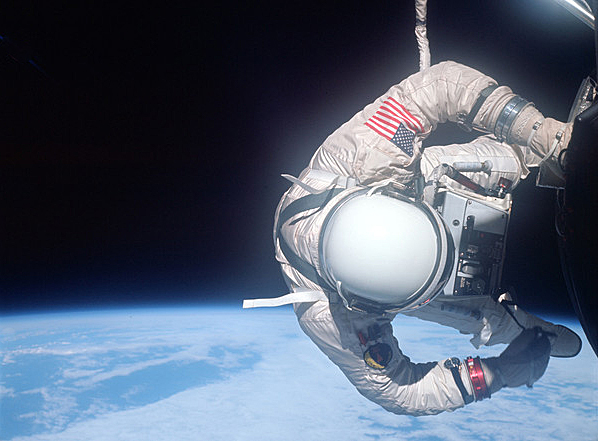
Fifty-one years ago this month, NASA’s pioneering manned spaceflight program, Project Gemini, was brought to a successful conclusion with the 4-day flight of Gemini XII. Remarkably, the mission was the tenth Gemini spaceflight in 20 months.
Boosted to Earth orbit by a two-stage Titan II launch vehicle, Gemini XII Command Pilot James A. Lovell, Jr. and Pilot Edwin E. “Buzz” Aldrin, Jr. lifted-off from Cape Canaveral’s LC-19 at 20:46:33 UTC on Friday, 11 November 1966. The flight was Lovell’s second trip into space and Aldrin’s first.
Like almost every Gemini mission before it, Gemini XII was not a glitch-free spaceflight. For instance, when the spacecraft’s rendezvous radar began acting oddly, the crew had to resort to sextant and chart to complete the last 65 nautical miles of the rendezvous with their Agena Target Vehicle. But, overcoming this and other obstacles served to provide the experience and instill the confidence needed to meet the truly daunting challenge that lay ahead; landing on the Moon.
Unquestionably, Gemini XII’s single most important contribution to the United States manned space effort was validating the notion that a well-trained astronaut could indeed do useful work in an Extra-Vehicular Activity (EVA) environment. The exhausting and dangerous EVA experiences of Gene Cernan on Gemini IX and Dick Gordon on Gemini XI brought into sharp focus the challenge of performing even seemingly simple work assignments outside the Gemini spacecraft.
Buzz Aldrin performed a trio of EVA’s on Gemini XII. Two of these involved standing in his seat with the hatch open. The third involved a tethered EVA or space walk. On the latter, Aldrin successfully moved about the exterior of the Gemini-Agena combination without exhausting himself. He also used a special-purpose torque wrench to perform a number of important work tasks. Central to Aldrin’s success was the use of foot restraints and auxiliary tethers to anchor his body while floating in a weightless state.
Where others had struggled and not been able to accomplish mission EVA goals, Buzz Aldrin came off conqueror. One of the chief reasons for his success was effective pre-flight training. A pivotal aspect of this training was to practice EVA tasks underwater as a unique means of simulating the effects of weightlessness. This approach was found to be so useful that it has been used ever since to train American EVA astronauts.
Lovell and Aldrin did many more things during their highly-compressed 4-day spaceflight in November of 1966. Multiple dockings with the Agena, Gemini spacecraft maneuvering, tethered stationkeeping exercises, fourteen scientific experiments, and photographing a total eclipse occupied their time aloft.
On Tuesday, 15 November 1966, during their 59th orbit, a tired, but triumphant Gemini XII crew returned to Earth. The associated reentry flight profile was automated; that is, totally under the control of a computer. This feat was yet another first and vital accomplishment for Project Gemini. Splashdown occurred in the West Atlantic Ocean at 19:21:04 UTC.
While Gemini would fly no more, both Lovell and Aldrin certainly would. In fact, both men would play prominent roles in several historic flights to the Moon. Jim Lovell flew on Apollo 8 in December 1968 and Apollo 13 in April 1970. And of course, Buzz Aldrin would walk on the Moon at Mare Tranquilitatis in July 1969 as the Lunar Module Pilot for Apollo 11.





